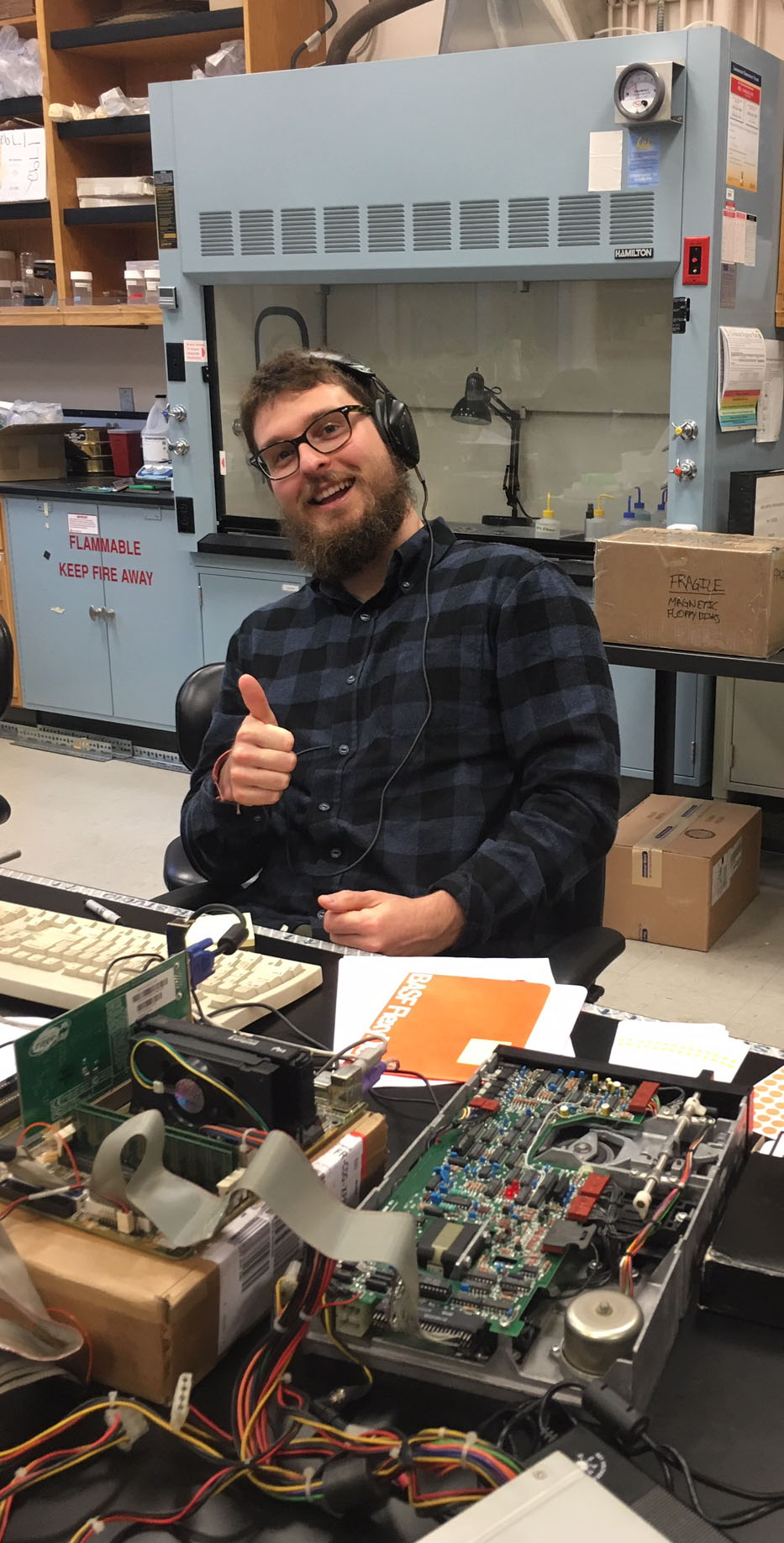Coal ball data mining
|
Paleontologic Data Fossilized on IBM 8” Floppies
The Pennsylvanian (323-299 million years ago) is one of the most interesting time periods in Earth’s history. Giant dragonfly relatives like Meganeura (>60 cm wingspan!), 2-m-long millipedes named Arthropleura, and early mammal-like reptiles lived in a world that likely had atmospheric oxygen levels well above today’s. These animals roamed a landscape dominated by extensive peat swamps, covering large parts of what was then Euramerica. These swamp forests would look entirely alien to any of us today. However, due to exceptional preservation of plant matter in these swamps, the Pennsylvanian has one of the best plant fossil records of any time period. In the Looy Lab, we study the evolution of the plants in the Paleozoic, with an emphasis on climate change, ecosystem structure and function, and the history of fire under hyperoxic conditions (read more about our Philips Coal Ball Collection project here). Probably the largest fossil collections from the Pennsylvanian in the world was made by professor Tom Phillips at the University of Illinois, Champaign-Urbana. Phillips, his graduate students and collaborators microscopically analyzed over 800,000 cm2 of plant material. They recorded which plant taxa, tissues, and organs were present in each square-centimeter, and whether or not those tissues/organs were charcoalified (burned) or not. Until recently it was thought that these data were only available on paper as a truck-sized volume of mainframe computer printouts. Last Fall we rediscovered more than 360 vintage 1970s 8-inch floppy disks. Watch these videos to see how, in collaboration with Youtube’s Curious Marc & Co and Antoine Bercovici, we unlocked this unparalleled paleobotanical dataset. |
See the two-part mini-docu Curious Marc made about our ongoing coal ball data archaeology project
|
Vertical Divider


